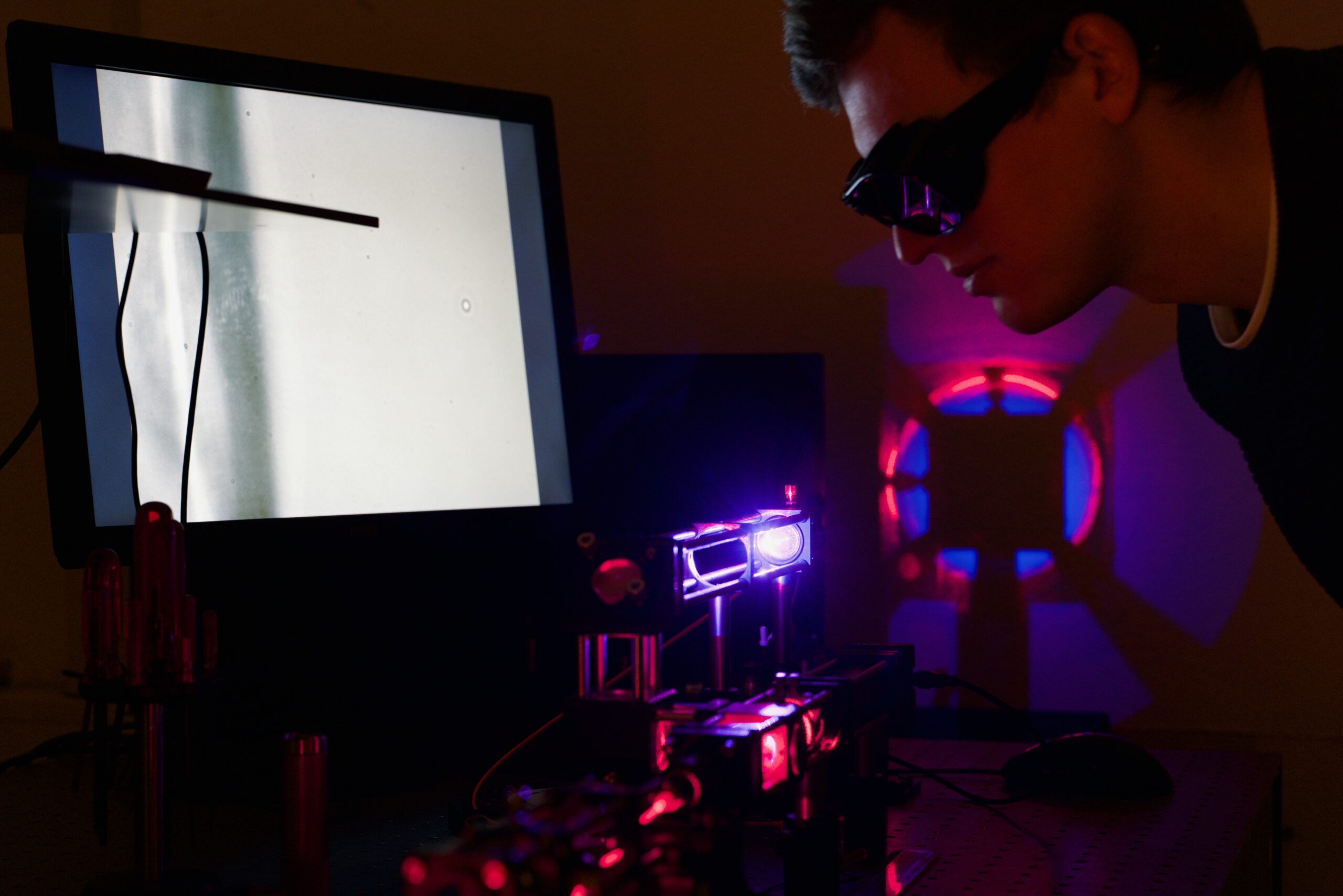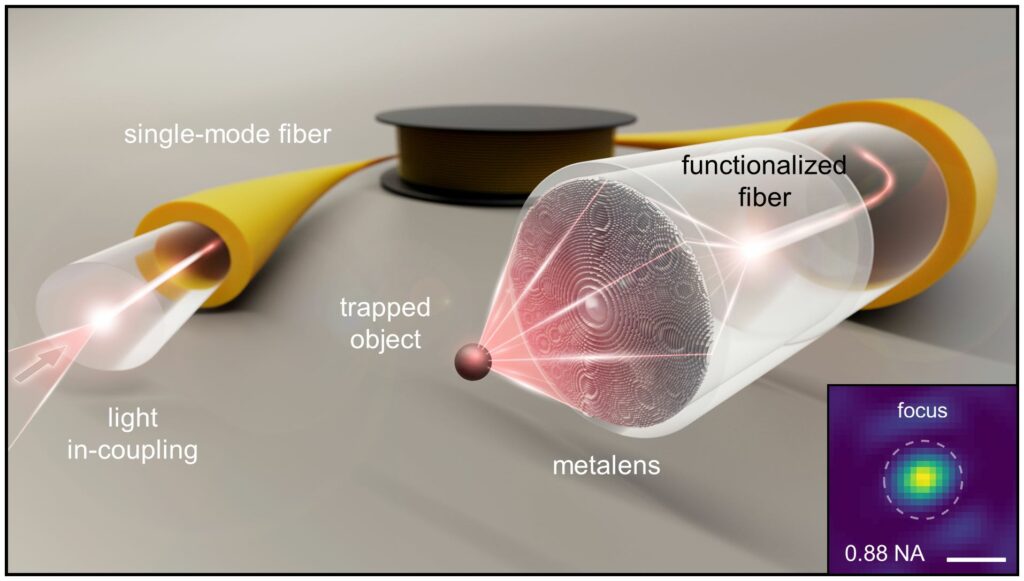- Home
- Research
- Fiber Photonics
- Research results
- Meta-fiber with ultra-high numerical aperture for flexible optical traps
Meta-fiber with ultra-high numerical aperture for flexible optical traps

08.12.2022
Scientists at Leibniz IPHT have succeeded in using 3D nanoprinting to apply an ultra-thin lens to the end of an optical fiber that is just as thin as the human hair. The combination of diffractive optics and fiber enables optical trapping of the smallest particles and offers novel possibilities for in-vivo applications.
If objects of only a few micrometers in size are to be examined microscopically in bioanalytical or medical applications, fixing of these objects is often useful. This is made possible by optical traps, also known as optical tweezers. They hold objects without contact and – combined with imaging or spectroscopic methods – enable high-resolution optical measurements during trapping.
An optical trap uses the power of light to capture objects at the center of a focused laser beam. Existing approaches rely on elaborate and complex optical systems that use, for example, microscope lenses to focus the laser beam. To overcome these disadvantages, researchers at Leibniz IPHT developed a flexible design to optically control microscopic and nanoscopic objects as precisely as possible.
In the pricture:
Minimized objects in micro- or nanometer size can be optically trapped by a focused laser beam using the flexible meta fiber.
To do this, the researchers used 3D nanoprinting to apply a diffractive optical lens with a diameter of 90 micrometers and a height of three micrometers to the end of an optical fiber. “This polymer lens on the tip of a flexible optical fiber allows us to focus the coupled laser light with high precision. By doing so, we were able to capture freely moving micro-objects, such as E. coli bacteria, with a single optical fiber in water and fix them optically in a stable manner for several minutes, which is unique to date,” explains Dr. Malte Plidschun, scientist in the Hybrid Fibers Group in the Fiber Photonics Department at Leibniz IPHT.
Thanks to the smart design of the diffractive optical lens, also known as meta lens, an extraordinarily high numerical aperture (NA) of up to 0.9 could be achieved. The NA describes the magnification and focusing performance of optical systems. The higher its value, the more precisely details can be resolved microscopically and the better the light can be focused. Until now, an optical trapping with a comparatively high NA was only possible with elaborate and complex setups. “Optical traps based on flexible fibers offer completely new diagnostic possibilities, especially for regions that are difficult to access. A combination of optical trapping and Raman spectroscopy, for example, enables a molecular characterization of cells directly in their natural environment in living organisms during the time of optical fixation. In this way, among other things, the investigation of blood cells or the diagnosis of pathogens could be significantly accelerated and advanced,” says Malte Plidschun.
More information in the following video:
Unfortunately, this video can only be downloaded if you agree to the use of third-party cookies & scripts.

